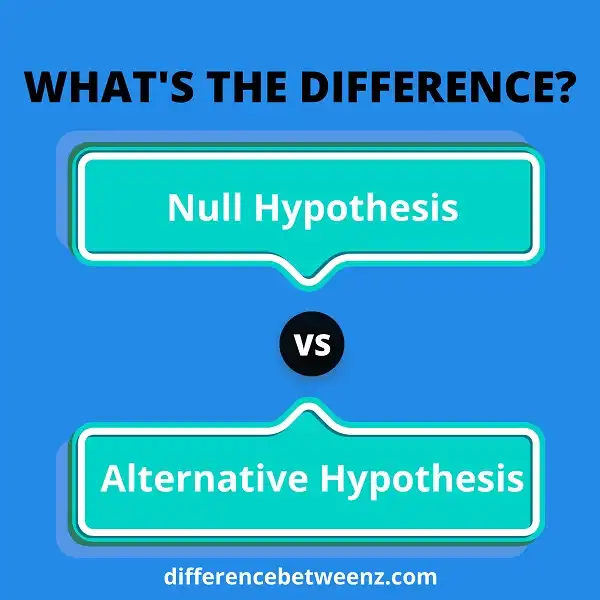The null and alternative hypotheses are two important concepts in statistics that you need to understand. The null hypothesis is the default hypothesis, while the alternative hypothesis is the hypothesis that is being tested. In order to determine whether or not a difference exists between two groups, you need to know what the null and alternative hypotheses are. In this blog post, we will discuss the differences between these two hypotheses and how they are used in statistics.
What is the Null Hypothesis?
The Null Hypothesis is the hypothesis that there is no difference between two groups. For example, if you were testing the effect of a new drug on patients, the Null Hypothesis would be that the drug has no effect on patients. The Null Hypothesis is usually denoted by H0. To test the Null Hypothesis, researchers typically compare the results of two groups: one group that receives the treatment (the experimental group) and one group that does not receive the treatment (the control group).
If the results of the two groups are significantly different, then the Null Hypothesis is rejected. If there is no significant difference between the two groups, then the Null Hypothesis cannot be rejected. Note that it is also possible to accept the Null Hypothesis; this just means that there is not enough evidence to reject it. In other words, if you cannot reject the Null Hypothesis, you cannot say for sure that there is a difference between the two groups.
What is an Alternative Hypothesis?
The Alternative Hypothesis, also known as the research hypothesis, is a statement that indicates what the researcher expects to find from a study. This hypothesis is typically based on previous research or observations. For example, if a researcher wanted to study the effects of a new medication on heart health, their Alternative Hypothesis might be that the medication will improve heart health. The null hypothesis, on the other hand, is a statement that indicates there is no expected difference between groups.
In our example, the null hypothesis would be that the new medication has no effect on heart health. When designing a study, researchers will use statistical methods to test whether the Alternative Hypothesis is supported or rejected. If the Alternative Hypothesis is supported, this means that there is a significant difference between the groups being studied. If the Alternative Hypothesis is rejected, this means that there is not a significant difference between the groups being studied.
Difference between Null and Alternative Hypothesis
In statistics, the null hypothesis is a hypothesis that there is no difference between two measured phenomena or no association between them. The alternative hypothesis is the opposing hypothesis to the null hypothesis; it states that there is a difference or association. Null and alternative hypotheses are used in statistical tests to determine which of the two models better explains the data. The null hypothesis is always the default assumption; typically, it is the model that states that there is no difference or association between two measured phenomena. If the null hypothesis is not rejected, then the alternative hypothesis cannot be accepted. If the data do not support the null hypothesis, then the alternative hypothesis may be supported.
Conclusion
The null hypothesis states that there is no relationship between the two variables, while the alternative hypothesis states that there is a relationship between the two. In order to determine which of these hypotheses is true, researchers use statistical tests to calculate the p-value. If the p-value is less than 0.05, then they can reject the null hypothesis and accept the alternative hypothesis. This means that there is a 5% chance or less that the results were obtained by chance alone and that there really is a relationship between the two variables.


